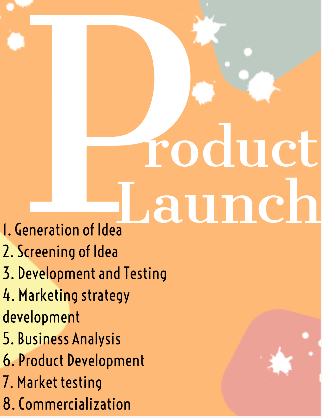Movie Case Study
The scene that you just saw shows Raj Malhotra (played by Salman Khan). Raj Malhotra owns a Company called Cosmetics of India. He is launching a new product at this party. He is inviting Madhu (played by Preity Zinta) to launch a new product for his company.
In this blog, Learning Perspectives will explore the meaning of product launch.
What is a New Product Launch?
Companies develop new products to cater to the market segments. Large companies often establish a new product department which is headed by someone who commands authority and has access to top management. He/she would have responsibility for figuring out new ideas and screening new ideas.
Working with the research and development department (R&D), testing the product, and finally commercialization.
Eight Important Stages of Product Launch
The new product development decision process involves eight steps. It starts with:
- Generation of Idea
- Screening of Idea
- Development and Testing
- Marketing strategy development
- Business Analysis
- Product Development
- Market testing
- Commercialization
Not all products make it to the sixth stage and many products wind up till the fifth stage where it is determined whether the product meets the profit goal of the company.

Commercialization Stage
The commercialization stage involves product launch which is the last stage of the product development process. Most new product campaigns also require a sequenced mix of market communication tools to build awareness and ultimately preference, choice, and loyalty.
Introducing a new consumer packaged good into the national market can cost $25million to $100 million in advertising, promotion, and other communication.
Timing:
It is important that the company figures out the timing of the launch of the product. A company is generally faced with 3 choices:
a) First entry: Here the company can enjoy the “first-mover advantage” of locking up key distributors and customers and gaining leadership. This move can also sometimes backfire.
b) Parallel entry: The firm might time its entry to coincide with competitors’ entry. The market may pay more attention when two companies are advertising a new product.
c) Late entry: The firm might delay its launch until after the competitor has borne the cost of educating the market, and its product may reveal flaws the late entrant can avoid. The late entrant can also learn the size of the market.
Geography Strategy:
Most companies will develop a planned market rollout over time. Small companies may select an attractive city and put on a marketing campaign, entering other cities one at a time.
Large companies introduce their product into a whole region and then move to the next. Companies that have a national distribution network, launch their products nationally.
Target Market:
Within the rollout markets, the companies must target initial distribution and promotion to the best prospect group. The objective is to achieve high sales.
Introductory Market Strategy:
Product launches generally cost high and take a longer duration. They, at times, suffer from underfunding. It’s important to allocate sufficient time and resources. yet not overspend.
References: Marketing Management by Philip Kotler









[…] sales, public relations, etc. Promotions are dependent on the life stage of the product. If the product is in the introduction stage, there needs to be heavy advertising and publicity. In the growth […]